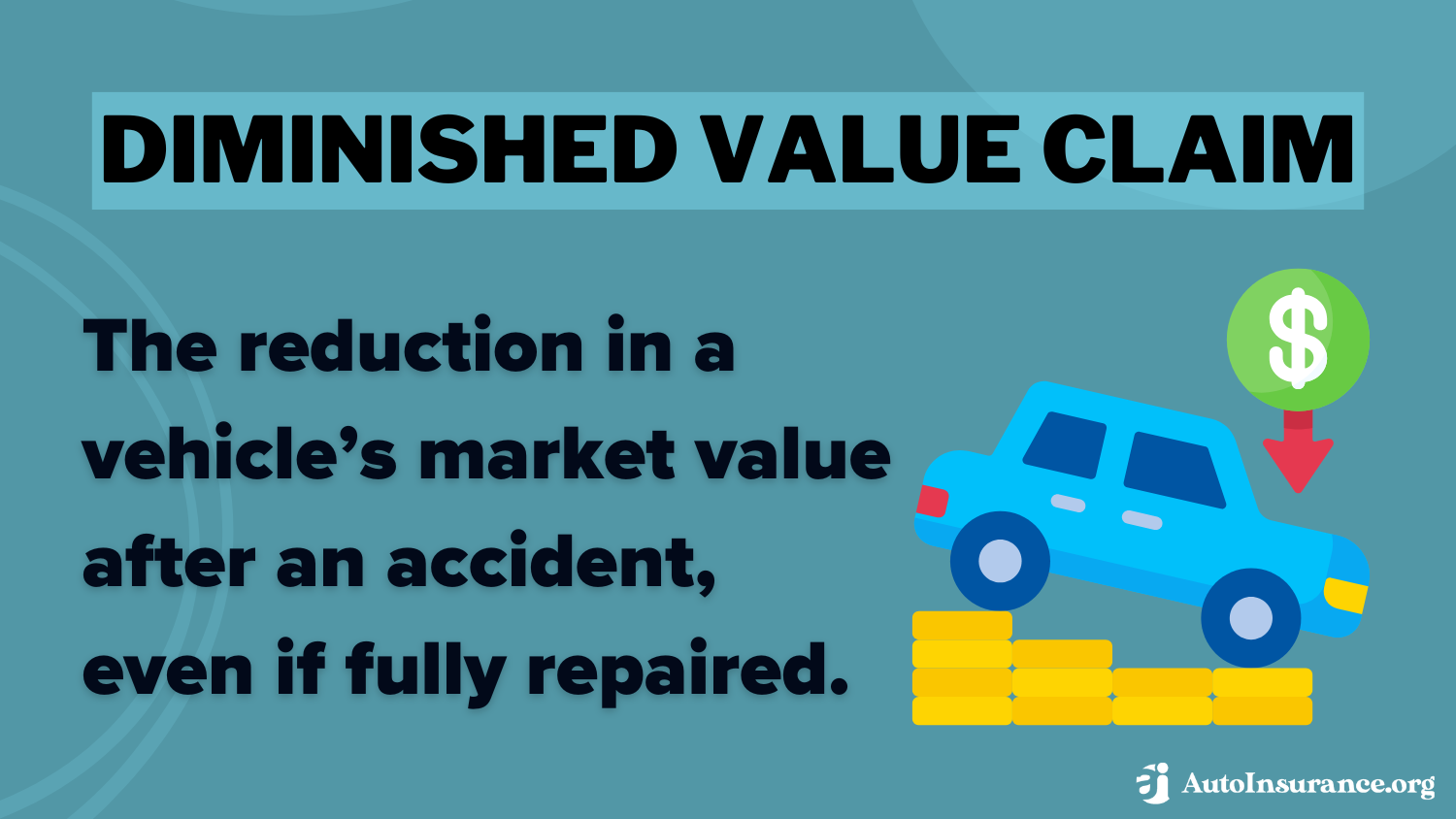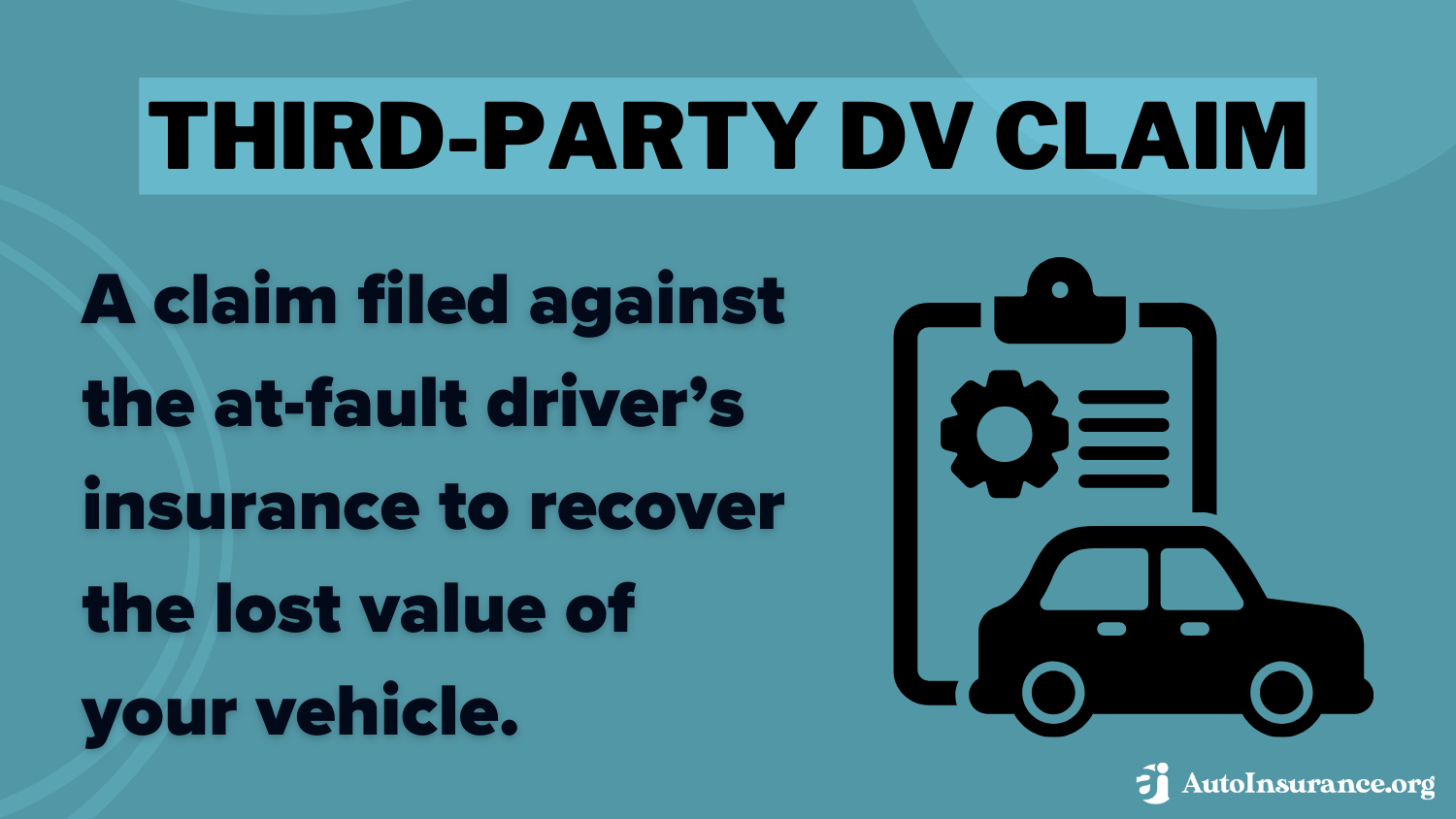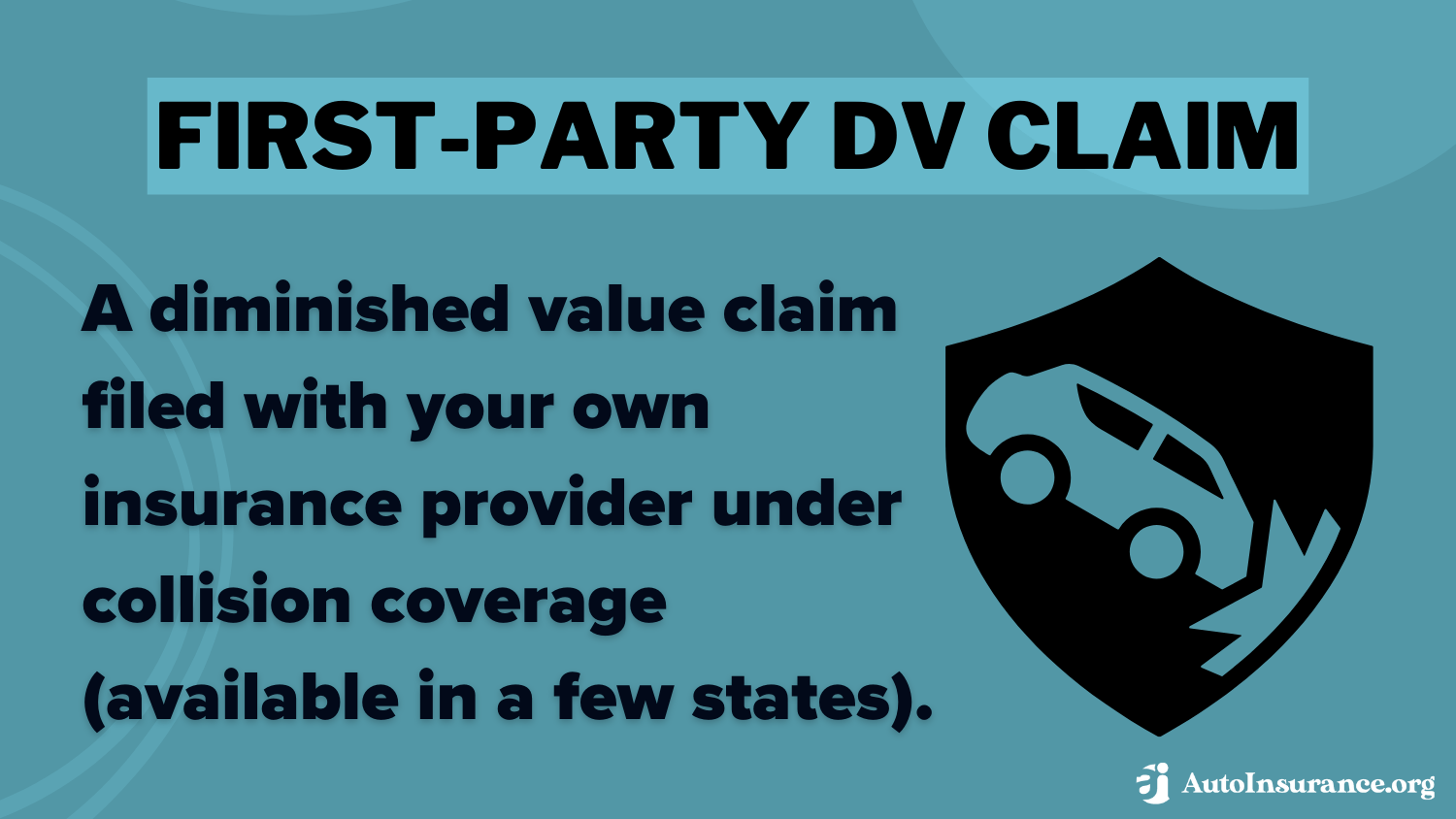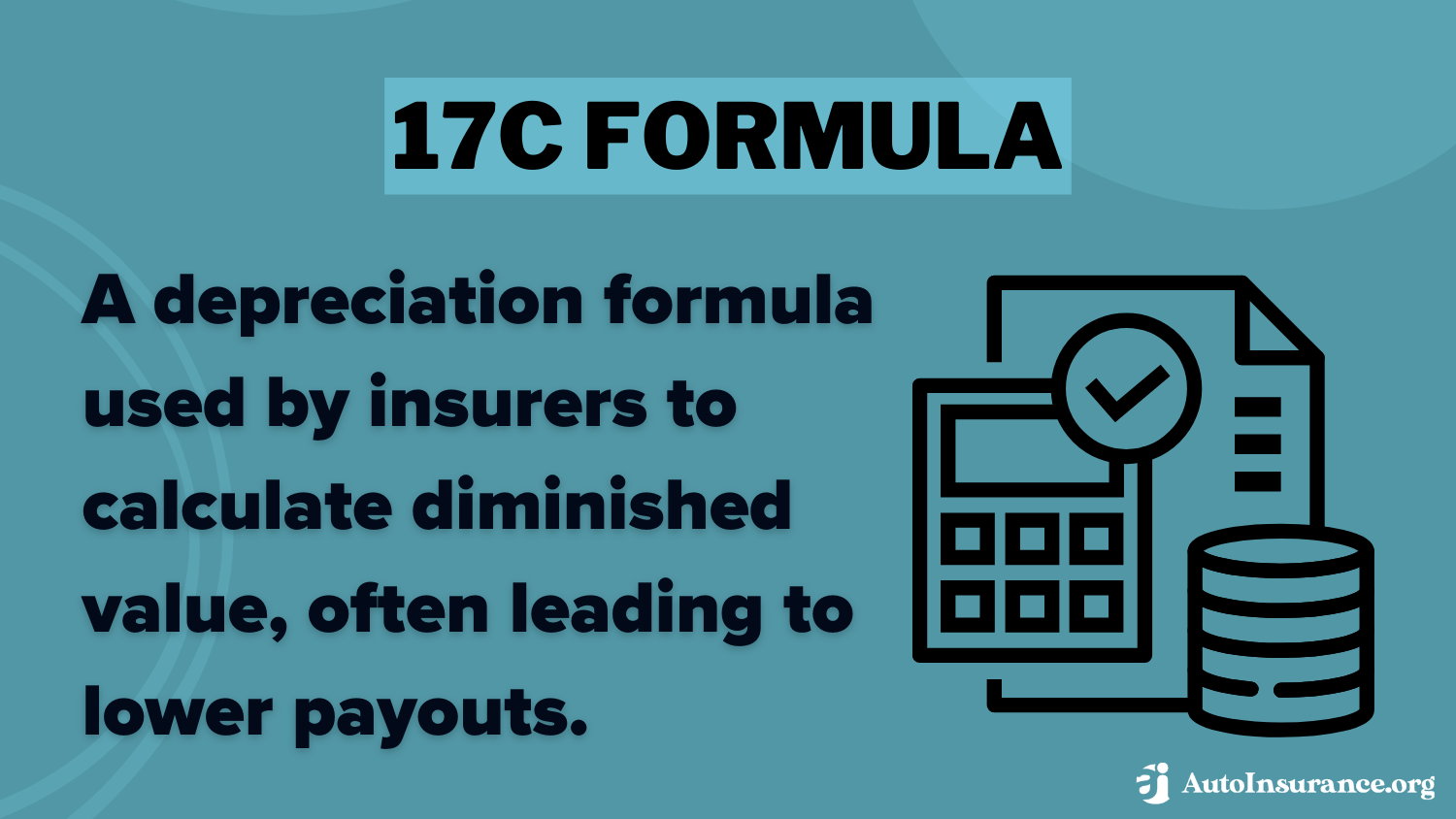Diminished Value Claim in 2025 (How to File & Win!)
A diminished value claim recovers a car’s lost market value after an accident, even if repaired. Many insurers use the 17c formula for lower payouts, and payouts range from 10% to 25% of the car’s pre-accident value. Some states allow first-party claims, while most only permit third-party claims.

Free Car Insurance Comparison
Compare Quotes From Top Companies and Save
Secured with SHA-256 Encryption
Jeffrey Johnson
Insurance Lawyer
Jeffrey Johnson is a legal writer with a focus on personal injury. He has worked on personal injury and sovereign immunity litigation in addition to experience in family, estate, and criminal law. He earned a J.D. from the University of Baltimore and has worked in legal offices and non-profits in Maryland, Texas, and North Carolina. He has also earned an MFA in screenwriting from Chapman Univer...
Insurance Lawyer
UPDATED: Mar 23, 2025
It’s all about you. We want to help you make the right coverage choices.
Advertiser Disclosure: We strive to help you make confident auto insurance decisions. Comparison shopping should be easy. We are not affiliated with any one auto insurance provider and cannot guarantee quotes from any single provider. Our partnerships don’t influence our content. Our opinions are our own. To compare quotes from many different companies please enter your ZIP code on this page to use the free quote tool. The more quotes you compare, the more chances to save.
Editorial Guidelines: We are a free online resource for anyone interested in learning more about auto insurance. Our goal is to be an objective, third-party resource for everything auto insurance related. We update our site regularly, and all content is reviewed by auto insurance experts.
UPDATED: Mar 23, 2025
It’s all about you. We want to help you make the right coverage choices.
Advertiser Disclosure: We strive to help you make confident auto insurance decisions. Comparison shopping should be easy. We are not affiliated with any one auto insurance provider and cannot guarantee quotes from any single provider. Our partnerships don’t influence our content. Our opinions are our own. To compare quotes from many different companies please enter your ZIP code on this page to use the free quote tool. The more quotes you compare, the more chances to save.
On This Page
A diminished value claim helps you recover the loss in your vehicle’s market value after an accident, even after repairs. Policyholders must understand their rights since insurance companies often fail to inform them about this option.
Three types of diminished value exist: immediate, inherent, and repair-related. Your claim’s success depends on state laws, insurer policies, and how well you prove the loss. Some states allow first-party claims if you have collision coverage, while third-party claims depend on the at-fault driver’s insurance.
To strengthen your case, you may need a professional appraisal or legal guidance. Insurers often challenge these claims, so knowing the process improves your chances of compensation.
- A diminished value claim recovers a car’s lost value after an accident
- Most states allow third-party claims, while few permit first-party claims
- Insurers often undervalue claims using the 17c formula, lowering payouts
Understanding your eligibility and legal options ensures you don’t leave money on the table. Enter your ZIP code for more information on filing a diminished value claim in your state.
Understanding The Diminished Value Claim Meaning
A diminished value (DV) claim allows vehicle owners to seek compensation for the loss in market value after an accident, even if the car has been fully repaired. Not everyone is eligible to file a diminished value claim, as it depends on state laws, insurance policies, and fault determination. Third-party claims against the driver in an at-fault accident are the most common.
Some policies cover first-party DV claims under collision insurance, but many exclude it. Some states allow first-party DV claims (e.g., Georgia, North Carolina, Kansas).
Stronger claims for newer, low-mileage, or well-maintained cars are more likely to be successful, as are DV claims on leased or financed vehicles. Lenders may require compensation for lost value.
Read More: How Insurance Companies Determine a Vehicle’s Value
Types of Diminished Value
When a vehicle is involved in a collision, its history is permanently recorded in databases like Carfax or AutoCheck, making it less desirable to potential buyers. There are three main types of diminished value, each affecting how much compensation you may be entitled to:
- Immediate Diminished Value: This represents the drop in market value immediately after the accident but before repairs. It’s rarely claimed, as insurance companies focus on post-repair valuation, but is used in legal cases where an accident prevents a vehicle from being sold at its pre-accident price.
- Inherent Diminished Value: This is the most common form of diminished value in insurance claims — when a repaired vehicle is still worth less than a similar car with no accident history. Even with perfect repairs, buyers and dealers perceive the car as less valuable due to its accident history.
- Repair-Related Diminished Value: This happens when improper repairs from poor workmanship, use of aftermarket parts, paint mismatches, or structural weaknesses further reduce the vehicle’s value beyond the accident’s impact. It’s more difficult to prove, but you may seek compensation if repairs were substandard.
Even high-quality repairs using original parts cannot restore the vehicle’s pre-accident value. Because of this, insurance companies may be responsible for paying the difference in value through a diminished value claim.
Diminished value claims vary by state auto insurance laws, insurance company policies, and fault determination. Some states allow first-party claims under collision coverage, while others limit compensation to third-party claims against an at-fault driver’s insurer. Understanding these three types helps you determine the best approach when filing a diminished value claim and negotiating with insurance companies.
State Laws on Diminished Value Claims
Diminished value claim eligibility varies by state, with different rules for first-party and third-party claims. Most states permit third-party DV claims, allowing you to seek compensation from the at-fault driver’s insurance. Since the at-fault party is responsible for all financial losses, their insurer may be required to cover diminished value.
State Laws on Diminished Value Claims
| State | Diminished Value Allowed? | Type (First-Party/Third-Party) | Statute of Limitations |
|---|---|---|---|
| California | Yes | Third-Party | 3 Years |
| Texas | Yes | Third-Party | 2 Years |
| Florida | Yes | Third-Party | 4 Years |
| Georgia | Yes | First & Third-Party | 4 Years |
| New York | No | N/A | N/A |
Only a few states, including Georgia, North Carolina, and Kansas, require insurers to cover first-party DV claims under a policyholder’s own insurance. In most states, insurers exclude diminished value from collision or comprehensive coverage, making third-party claims the primary option.
Each state also has a statute of limitations for filing a DV claim. The diminished value claim time limit typically ranges from two to six years from the accident date. Missing this deadline may result in a denied claim. Check your state’s insurance laws to confirm your rights and filing deadlines before pursuing a diminished value claim.
Free Auto Insurance Comparison
Enter your ZIP code below to view companies that have cheap auto insurance rates.
Secured with SHA-256 Encryption
How to File a Diminished Value Claim
Filing a diminished value claim requires gathering strong evidence and following specific steps to prove your vehicle’s lost market value. Insurance companies are often reluctant to pay DV claims, so a well-prepared approach increases your chances of success.
- Check Your State Eligibility: Determine whether your state allows first-party DV claims (filed with your own insurer) or only third-party claims (filed against the at-fault driver’s insurer).
- Gather Documentation: Official police reports establish the details of the accident, and repair estimates or receipts will show what repairs were done and whether original or aftermarket parts were used.
- Get a Professional Appraisal: A certified auto appraiser can determine the diminished value using industry standards and tools like a diminished value calculator. Compare similar vehicles with and without accident history to determine real-world impact.
- Submit & Negotiate Your Claim: Write a formal diminished value demand letter, including all evidence and the appraised loss amount. Insurers may deny the claim outright or offer a low settlement, so consider hiring a diminished value claim attorney if the company refuses fair compensation.
Before filing, review state laws and your insurance policy to confirm eligibility for compensation. Some insurers exclude coverage for diminished value. Older cars or those with prior damage may have weaker claims, so consider factors like vehicle age, pre-accident condition, and repair quality.
I Successfully Claimed Diminished Value on My Car, Here’s How I Did It.
byu/Material_Tea_6173 inInsurance
Consider getting a diminished value appraisal to support your claim. Following these steps ensures you build a strong claim and maximize your chances of recovering your vehicle’s lost value.
Read More: Where can I compare online auto insurance companies?
How Insurance Companies Handle Diminished Value Claims
How do insurance companies value totaled cars? Insurance companies often downplay or deny diminished value claims to minimize payouts. Adjusters may use flawed formulas (like 17c) to undervalue your claim.
Here’s an example of how diminished value is calculated using the 17c formula. Many insurers use it, though it often undervalues claims.
Diminished Value Claim Example With 17c Formula Calculation
| Factor | Value |
|---|---|
| Pre-Accident Value | $20,000 |
| Base Loss of Value (10%) | $2,000 |
| Damage Multiplier (Moderate Damage = 0.50) | $1,000 |
| Mileage Multiplier (60,000 miles = 0.60) | $600 |
| Total Diminished Value | $600 |
Market-based appraisals often show higher losses, so hiring a professional appraiser can help you negotiate a better settlement.
Insurers may also stall, hoping claimants give up or accept less. To counter these tactics, gather strong evidence, including repair records and market comparisons. Insurers require strong evidence, so obtain a professional appraisal and be prepared to negotiate or take legal action if the insurer refuses fair compensation.
Read More: How to File an Auto Insurance Claim
Proving Diminished Value
Insurance companies often challenge diminished value claims, so strong evidence is key to securing compensation. Keeping accident and repair documentation, vehicle history reports, pre- and post-accident valuations, professional appraisals, and comparable sales analysis will strengthen your case and improve your chances of getting fair compensation.
Diminished value claims are often underestimated. Insurers rely on the 17c formula, but real market losses can be much higher. A proper appraisal is key to fair compensation.Schimri Yoyo Licensed Agent & Financial Advisor
Taking the time to gather a diminished value report, appraisal, and market data ensures you receive the compensation you deserve for your vehicle’s lost value. Insurance companies often try to minimize payouts, but with solid evidence, you can challenge undervalued offers and negotiate for a better settlement.
Understanding how diminished value works helps vehicle owners maximize their chances of receiving fair compensation. If you believe your insurer is acting unfairly, learn how to file a complaint against an auto insurance company.
Steps to Take If Your Diminished Value Claim Is Denied
The amount you can recover for a diminished value claim depends on several key factors, including the accident severity, repair quality, the vehicle’s age and mileage, and any state laws or policy limits that impact your right to file a diminished value claim.
If your diminished value (DV) claim is denied, don’t accept the decision without challenging it. Insurers often reject claims to minimize payouts. Wondering how to dispute an auto insurance claim? You have options to fight back.
- Request a Written Explanation: Ask the insurer for a detailed reason for denial.
- Challenge the 17c Formula: Many insurers use this formula, but it often undervalues claims. Provide alternative calculations and strengthen your case with an independent appraisal or market value comparisons.
- File a Complaint with Your State’s Insurance Department: Some states require insurers to handle claims fairly.
If negotiations fail, consult a diminished value attorney to explore legal action or a small claims court case. Persistence is key — many denied claims are reversed or settled when properly challenged.
Maximizing your payout requires understanding the types of diminished value, state laws, and the claims process. Most states allow third-party DV claims, but only a few permit first-party claims, so check local regulations.
Insurance companies often undervalue diminished value claims. To get fair compensation, drivers should challenge low offers with independent appraisals and market data.Michael Vereecke Commercial Lines Coverage Specialist
Filing a diminished value claim can help recover the financial loss your vehicle suffers after an accident, even if repairs restore its appearance. Insurance companies often minimize or deny these claims, using formulas like 17c to undervalue losses. If your claim is denied, you have the right to appeal, escalate the dispute, or seek legal assistance.
Before filing, confirm your eligibility and state-specific rules. Enter your ZIP code for more information on how to pursue a diminished value claim in your area.
Free Auto Insurance Comparison
Enter your ZIP code below to view companies that have cheap auto insurance rates.
Secured with SHA-256 Encryption
Frequently Asked Questions
What is diminished value?
Diminished value refers to the loss in a vehicle’s market value after an accident, even if it has been fully repaired. Buyers and dealerships typically pay less for vehicles with an accident history, which is why owners may file a diminished value claim to recover this financial loss.
How do you calculate diminished value?
Diminished value can be calculated using different methods, but many insurance companies use the 17c formula or a totaled car value calculator. A more accurate approach is obtaining a professional appraisal or comparing similar vehicles in the market.
What is an example of diminished value?
A common diminished value example is a car worth $30,000 before an accident but is valued at only $26,000 after repairs. The diminished value is $4,000. This difference reflects the reduced resale value due to its accident history.
Why is it called diminished value?
The term “diminished value” is used because the vehicle’s worth has decreased compared to its pre-accident market value. Even after repairs, the car is considered less valuable to buyers.
How long should a claim take to settle?
What is the maximum time in which the insurer should settle a claim? Most diminished value claims take 30 to 90 days to settle, depending on the insurer’s response time, evidence provided, and negotiation process.
What is the 17c formula?
The 17c formula is an insurance depreciation formula used to calculate diminished value. It applies a base loss percentage (10%) to the vehicle’s pre-accident value, then adjusts for damage severity and mileage—often leading to undervalued payouts.
Can you claim diminished value on a leased car?
Diminished value claims on leased vehicles are complicated because the leasing company owns the car. However, if the lease agreement holds you responsible for depreciation, you may be able to seek compensation.
What happens if you get insurance after an accident?
Insurance typically won’t cover accidents that occurred before the policy was purchased. Auto insurance only applies to future incidents, not past damages.
What is the insurance law on diminished value in Texas?
Texas allows third-party diminished value claims, meaning you can file against the at-fault driver’s insurance. However, first-party claims (against your own insurer) are generally not covered unless specified in the policy. The Texas minimum auto insurance requirements can impact your ability to recover losses.
What is an example of diminution in value?
A homeowner purchases a property for $500,000, but poor neighborhood conditions reduce its value to $450,000 over time. This $50,000 loss represents a diminution in value.
What decreases property value the most?
Factors such as market downturns, location issues, crime rates, outdated features, and structural damage can significantly decrease property value. Enter your ZIP code to explore property value trends and insurance options in your area.
How do you compute diminished value?
The most accurate way to compute diminished value is to subtract the post-repair value based on comparable sales from the pre-accident market value of the vehicle to get the diminished value loss.
Read More: How do insurance adjusters determine the value of a car?
What is the rule of diminishing value?
The rule of diminishing value states that as an asset ages or suffers damage, its market worth decreases over time, even with repairs or maintenance.
How is fault determined in a car accident?
The fault is determined based on police reports, witness statements, traffic laws, and insurance investigations. Some states follow comparative negligence rules, meaning both parties could share responsibility. Can you claim auto insurance if it’s your fault? Yes, but it could impact your potential compensation.
Free Auto Insurance Comparison
Enter your ZIP code below to view companies that have cheap auto insurance rates.
Secured with SHA-256 Encryption
Jeffrey Johnson
Insurance Lawyer
Jeffrey Johnson is a legal writer with a focus on personal injury. He has worked on personal injury and sovereign immunity litigation in addition to experience in family, estate, and criminal law. He earned a J.D. from the University of Baltimore and has worked in legal offices and non-profits in Maryland, Texas, and North Carolina. He has also earned an MFA in screenwriting from Chapman Univer...
Insurance Lawyer
Editorial Guidelines: We are a free online resource for anyone interested in learning more about auto insurance. Our goal is to be an objective, third-party resource for everything auto insurance related. We update our site regularly, and all content is reviewed by auto insurance experts.



